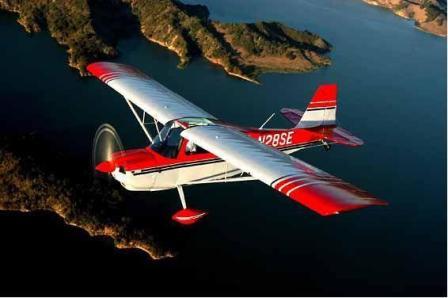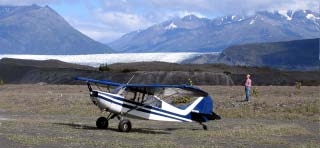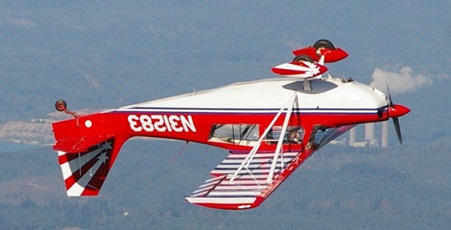Champ-Citabria-Decathalon-Scout
The Champ, Citabria, Decathalon and Scout aircraft follow a confusing lineage that even some diehard fans find difficult to follow. While basically the same airplane, they have been made by several manufacturers over the years with many different engines. The Champ was the first of the series. The Citabria (which incidentally is "airbatic" spelled backwards) is a modernized version of the Champ with some aerobatic capability. Basically, the Citabra featured a squared-off rudder and windows, and a more powerful engine. Citabrias have a Lycoming O-320 engine producing 150 hp. Both planes have good short-field performance.

The Decathalon was a more powerful derivation of the Citabria and was more capable aerobatically, but lacked wing flaps. Consequently, the Decathalon was not as good a short field plane as the others. The Scout was a Citabria with a longer wing and more rugged landing gear, hence it is the most capable of all in the bush. However all, with the exception of the Decathalon, are regularly in bush country.

The Scout and Citabria are both at home in the bush and have a loyal following. Although they generally are not considered to the bush planes that Super Cubs and Huskies are, their performance is not far behind. All of the planes in this series featured tandem seating like the Super Cub and Husky. Expect cruise speeds in the area of 100-115 mph.
The photo on the right is the Bagley Ice Field. It surrounds Mt. St. Elias which sits on the Alaskan Yukon border and is the second highest mountain in the United States and Canada.
The blue and white Champ in the photo below belongs to our friend Phil (also in the photo) who has gratiously taken me flying in Alaska on and off thoughout the past five years. From the Champ, I was able to take the photos of the glacier that appear on the home page in addition to a collection of fantastic Alaskan wildlife and landscape pictures. We thank Phil and his wife Lisa for their friendship and their enthusiasm for bush planes and bush flying. Good luck in the flour bombing competition!

American Champion Aircraft, Corp. manufactures the Champ out of Rochester, Wisconsin and touts it as reliable, affordable and easy to maintain. It is marketed as a perfect first tailwheel airplane or fun, weekend personal aircraft.
Traditionally the Champion line of aircraft used wooden wing spars nailed to aluminum ribs as the primary wing structure. This changed in 1990 when American Champion Aircraft redesigned and certified this structure with aluminum spars. This change is the core difference between new aircraft and older models (1980 and older). American Champion has never offered a wood spar wing.

The aluminum spar metal wings can be retrofitted to any of the older Citabria line of aircraft.
According to the manufacturer, this wing upgrade requires a $5,000 down payment and will take 6 to 9 weeks with a total cost of somewhere between $20,000 and $40,000, depending upon the model involved.
For some Citabria fans, it's well-known reputation as an aeronautical airplane out-shines it's STOL capabilities.

For the benefit of those who are fans of the Citabria's aeronautic capabilities, we though you'd enjoy a short video from a New Zealand Citabria pilot. Please click the arrow below to watch the Citabria GCBC in action.
For the benefit of those who are fans of bush planes and their STOL capabilities, the next video clip features a Citabria doing a touch and go on a gravel strip in Alaska.
Bob Hughes, from the United States, found bush-planes.com while looking for information about the Citabria, which he thinks is probably his dream plane. Do you agree? Vote for your favorite bush plane here.
Jeff Shaw from Canada, who has been flying for ten years, just purchased his dream plane, a Citabria 7GCBC. Feels pretty good, doesn't it? If you are the proud parent of a new bird and wish to brag and blow, you may do so here.
If you like pilot stories, be sure to check out the Citabria Pilot Report.